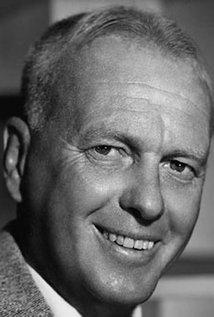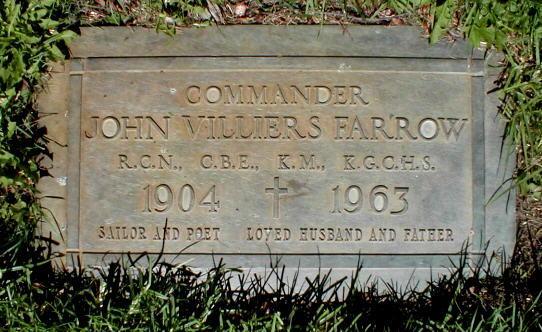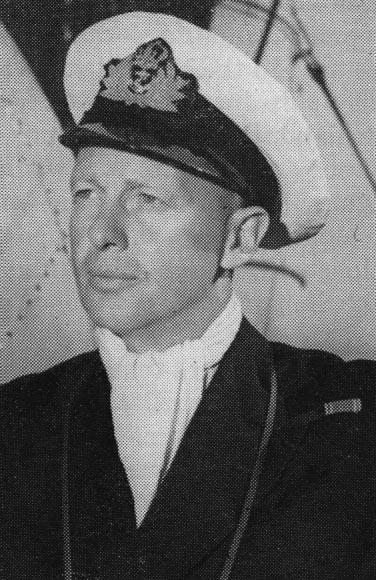John Farrow (John Villers Farrow)

Farrow was born in Sydney, Australia, the son of Lucy Villiers (née Savage; 1881-1907), a dressmaker, and Joseph Farrow (1880-1925), a tailor’s trimmer. His mother died when he was three years old. His parents were both of English descent. Farrow was educated at Newtown Public School and Fort Street Boys’ High School and then started a career in accountancy. He claimed to have run away to sea in an American barquentine, sailed “all over the Pacific”, and fought in revolts in Nicaragua and Mexico. Reaching the United States, he enrolled at the Jesuits’ St Ignatius College in San Francisco in 1923, but left after one month. He traveled throughout the Pacific, including Fiji, Hawaii and Guam. On arrival in Hollywood, Farrow fabricated his education, saying he had attended Newington College in Sydney, Australia (he lived in a street below its ovals), Winchester College in England and the US Naval Academy. Many publications and websites still contain this information. John Farrow started writing while working as a sailor and became interested in screenwriting after a chance voyage in the South Seas with the film-maker Robert J. Flaherty. Re-entering the United States, allegedly by jumping ship at San Francisco, he found his way to Hollywood where from 1927 his nautical expertise brought him work as a script consultant and technical adviser. He had already earned minor recognition as a poet and writer of short stories. He soon established himself as a notable screenwriter. He worked for DeMille Productions, Paramount Pictures and RKO Radio Pictures Inc. He compiled an English-French-Tahitian dictionary and wrote a novel, Laughter Ends (1933), In 1932 he went to England where he worked as a writer and assistant director on G. W. Pabst’s film of Don Quixote, and briefly visited Tahiti again.
John Farrow returned to Hollywood and re-established himself as a screenwriter. On 27 January 1933, while dancing at the Cocoanut Grove nightclub, he was arrested for breach of his visa, as part of a general crackdown against illegal immigrants in the film industry. Farrow was charged with making a false statement while entering the US, having claimed he was Romanian. Although threatened with deportation, eventually he was given five years probation, before being acquitted of the charges the following year. Farrow received a plum appointment to work on Tarzan Escapes (1936) but the film was subsequently rewritten and reshot. In 1930, it was announced that Farrow would direct his own story First Love but this did not materialize. He signed to Warner Bros in 1936 looking to direct and was linked with a number of projects, including a foreign legion story and an adaptation of The Pit and the Pendulum. Farrow finally made his directorial debut in 1937 with Men in Exile. Following this, he accompanied his wife to Europe, where she was making A Yank at Oxford (1938), lecturing on Father Damien, about whom Farrow had written a book, and receiving a Papal knighthood. On his return to Hollywood, Farrow resumed working as a director for Warners. He made several movies with Kay Francis and discovered a young Peggy Ann Garner. John Farrow left his contract for a number of months, ostensibly to finish a book he was writing on the history of the papacy, and also due to disputes over the script of Kay Francis’s Women in the Wind. However he soon re-emerged as a contract director for RKO. While there he made a number of highly successful B movies, notably The Saint Strikes Back (1939) and Five Came Back (1939). “I deliberately set out to become the damndest commercial director in the business,” he said later. “The only way to get anywhere in hospital is to make money pictures. Then you can get some measure of respect and authority from the studio bosses, and little by little you get to do more of the things you want to do.”
Despite his flourishing career and recently having become a father for the first time, Farrow was keen to be involved in World War II. He went to Vancouver in November 1939 and enlisted in the Canadian Navy. Farrow was appointed lieutenant in March 1940 and assigned to Naval History and the Controller of Information Unit. He worked on anti-submarine patrols and in April 1941 was loaned to the Royal Navy and appointed to HMS Goshawk naval base in Trinidad, and served as assistant to the Senior British Naval Officer, Curaçao. He contracted typhus fever and returned to Naval Headquarters, Ottawa, in late 1941. It was announced he would direct a Canadian war film starring his wife Maureen O’Sullivan while on leave, but this did not eventuate. John Farrow was invalided out of the Canadian Navy with typhus in January 1942 at the rank of Commander but remained in the naval reserve. In July 1943 he served as technical consultant for the proposed Royal Canadian Navy show. In May 1945 he was briefly recalled to active duty, travelling to Britain for work in connection with the Director of Special Services. Farrow’s films became less distinguished towards the end of the 1950s. He received an offer from Samuel Bronston to make two films, a biography of John Paul Jones and a story of the life of Jesus Christ, which Farrow had been trying to make for years. He made the first one – John Paul Jones – and was replaced as director on the second by Nicholas Ray – King of Kings (1961). John Farrow died from a heart attack in Beverly Hills, California at the age of 58 and was buried in the Holy Cross Cemetery, Culver City.
Born
- February, 10, 1904
- Sydney, Australia
Died
- January, 27, 1963
- USA
- Beverly Hills, California
Cause of Death
- heart attack
Cemetery
- Holy Cross Cemetery
- Culver City, California
- USA



